CGE has a baseline policy that allows only the client's default printer to be available in the Citrix session. Which end-user group requires an exception policy to override this and allow multiple printers to be available in the Citrix session?
A. Research
B. Engineers
C. Back Office
D. Executives/Management
Correct Answer: C Testlet 1
CGE is a global, diversified, upstream (exploration and production) oil and gas company headquartered in North America. CGE's three main operating areas are North America, Europe, and Southeast Asia. CGE also has a portfolio of international exploration opportunities. CGE began in North America as a small, upstream oil and gas company. Through acquisitions, CGE grew quickly and acquired companies globally. This led to a decentralized IT model, both from systems and personnel perspectives. CGE currently utilizes several Citrix technologies to provide application virtualization to a global end-user base spread across several continents. Its current IT model for application virtualization is based on regional locations; each region hosts its own Citrix environment to support its local end-user base. CGE is moving toward a global IT model in which the entire application and desktop virtualization environment will be hosted in three data centers, each with a highly available NetScaler pair. CGE would like to provide dedicated desktops to some end-user groups to alleviate past issues with applications and performance. In addition, an Internet upgrade project is underway to eliminate slow connections at all sites. This will improve latency and bandwidth issues throughout the environments. CGE engaged Citrix Consulting to determine whether best practices are being followed in its existing Citrix environments; to provide a design document for a new, consolidated Citrix environment; and to point out risks that should be resolved before moving to this new environment. This deliverable represents the output of the requirements gathering phase and will be used as an input during the architectural design phase of this engagement. Through interactive meetings, Citrix Consulting obtained information regarding CGE's existing Citrix XenApp environments and strategic goals. By reviewing this information, CGE can understand and methodically address those areas that represent the most profound risks, improve various facets of its current environments, and prepare for the future design phase of a consolidated environment.
During the course of the project, CGE and Citrix Consulting identified a number of project goals. The following summarizes these goals:
•
Perform a detailed assessment of the Citrix components supporting the existing Citrix environments, which include XenApp 6.x, XenServer, and NetScaler Gateway.
•
Review relevant peripheral components that support the existing Citrix environments (for example, Active Directory, storage, SQL, networking) to determine if each can support current production workloads and a new Citrix environment.
•
Identify operational and environmental improvements to better account for the environments’ growth.
CGE has locations spread across three primary regions—North America, Europe, and Southeast Asia—
with its primary headquarters located in Houston. Sub regions exist within each region, each with its own
Citrix infrastructure. Once power and cooling upgrades are complee, Houston will be the primary
datacenter and London will be the secondary datacenter.
The following diagram details the locations and network connection types.
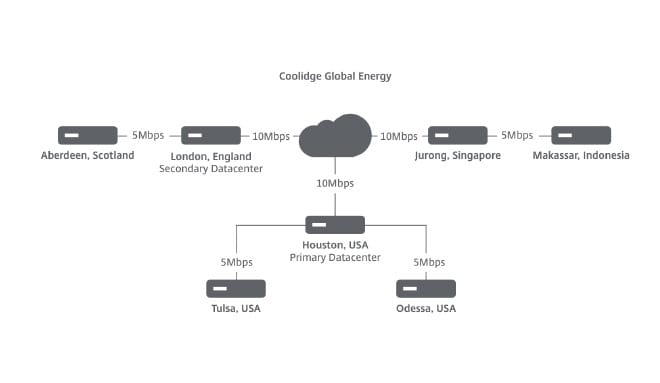
Since CGE expanded quickly through acquisitions, corporate IT left infrastructure management up to the
acquired companies. As a result, some regions have well-run Citrix environments, while others experience
critical outages that simultaneously affect hundreds of end users.
CGE's CIO, who has been with CGE for slightly less than a year, was hired to be the central point for IT
across all regions. The CIO has engaged with the various business units to understand their processes
and received various complaints about the stability of the existing Citrix infrastructures.
The CIO feels that the majority of Citrix infrastructure issues are due to a lack of centralized control and
common platforms. Some regions have older versions of XenApp, while some are more current. As CGE
moves forward, the CIO plans to use a single vendor for the entire solution, and wants to ensure that the
new infrastructure is virtualized and fault tolerant.
CGE has 10,350 employees, approximately 4,700 of which access the Citrix environments daily. Peak
logon times are Monday through Friday, from 8:00 a.m. – 10:00 a.m., based on local, regional time zones.
Technicians and engineers are shift workers who rotate to accommodate a 24 hours a day, seven days a
week schedule.
End user distribution is as follows:
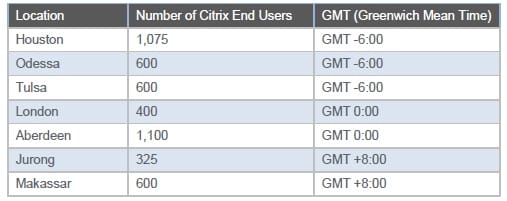
The majority of end users connect using CGE-owned HP laptop and desktop devices. Over 90 percent of these devices are Windows 7-based, as CGE is in the process of completing a Windows XP to Windows 7 migration.
CGE has standardized all these devices on Citrix Online Plug-in for Windows12.1, and is in the process of testing Receiver for Windows 4.2. In the past, some end users have complained about slowness when typing, which may indicate issues with latency. CGE also allows end users to connect using non-corporate-owned devices. Many end users connect from personal computers and mobile devices such as Apple iPads and iPhones. End users are instructed to download Citrix Receiver from either the Citrix website or the Android or Apple app stores. End users can be grouped into six separate categories:
•
Executives/Management – Regional upper- and mid-level management staff.
•
Back Office – End users that provide functions such as accounting, administration, human resources, and finance.
•
Research – End users focus mainly on discovering new energy fields and sources.
•
Engineers – End users who work with technicians in a senior lead role for both technical and management functions. There is approximately one engineer for every five technicians.
•
Technicians – Field workers who service the oil and gas equipment.
•
Sales – Primary customer-facing group. End-user groups and numbers are as follows:

The engineers, technicians, and research groups access Citrix applications primarily in an office-type environment, but may need to access these applications while in the gas and oil fields. In these scenarios, end users connect to Citrix using local Internet connections, ranging from a wireless access point to a tethered mobile device. To prevent printer driver issues and sprawl, CGE tries to limit end users to their default printer when accessing Citrix. The IT department at CGE's headquarters has mandated that only the Citrix Universal Print Driver be utilized. As each region manages its own Citrix infrastructure, this has been difficult to enforce. Each end user's home directory is mapped when accessing a Citrix session; the drive-mapping letter varies based on the end user's region. End-user data is stored on different network device types and shares ranging from a Windows CIFS share to an NAS appliance. Corporate IT is unsure if end-user data is being backed up in all regions. CGE hopes to implement formal, corporate-wide standards in the new Citrix environment.
Since each region has its own Citrix environment, end users are fairly isolated within their specific regions. In each region, NetScaler Gateway and Web Interface provide access for internal and external end users. In some regions, Citrix Secure Gateway is still being utilized for external access. This is primarily due to a past budget constraint, but CGE hopes to provide a redundant and fault-tolerant Citrix access solution for all regions with the new environment. Confusion with the use of the appropriate URL also occurs for end users travelling among regions. A common access point that routes end users to their closest datacenter would most likely reduce this confusion. As CGE is sensitive to the research that is being conducted toward the development of new energy types and methods, external access to the Citrix environment must be as secure as possible. Currently, internal and external end users employ single-factor authentication; however, the development of a two-factor authentication process is desired.
Overview
The following table outlines the utilization of Web Interface, StoreFront, NetScaler Gateway, and Citrix Secure Gateway in the various Citrix environments.
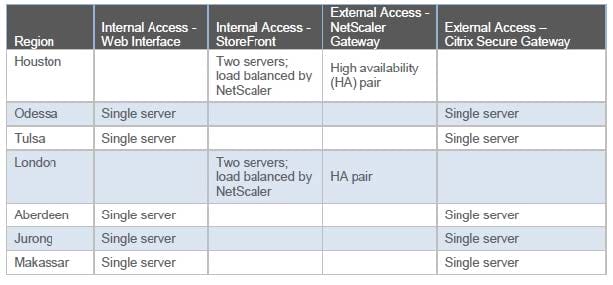
The following table outlines the current overall profile strategy:

Corporate IT would like to streamline the profile management solution. Numerous end users complain about slow logon and logoff times, and routine profile corruption is also a concern. It is common for IT to have to reset end-user profiles on a daily basis. CGE hopes to provide a stable end-user profile platform by implementing a standardized set of hardware to host profiles and by employing Citrix Profile Management. Citrix policies vary from region to region, but corporate IT has tried to enforce the following policy settings (at a minimum):

Technicians and engineers require USB mapping for various field devices such as flow meters and sonar
devices. Since the majority of the remaining end-user groups probably do not need USB mapping, this
could be disabled for those groups in the new environment.
Corporate IT feels that most end users require only their default printer within a Citrix session. However,
other end-user groups (primarily Back Office) need to access multiple printers with advanced printing
functionality, such as stapling. In all cases, the need to limit native print drivers is critical.
The majority of end users utilize published applications delivered through one of the regional XenApp
farms. Some end-user groups require a full desktop instead of published applications. CGE mandates that
no new software (agents) may be deployed in the current desktop infrastructure.
The following table provides additional details about the applications and desktops used throughout the
Citrix environments.
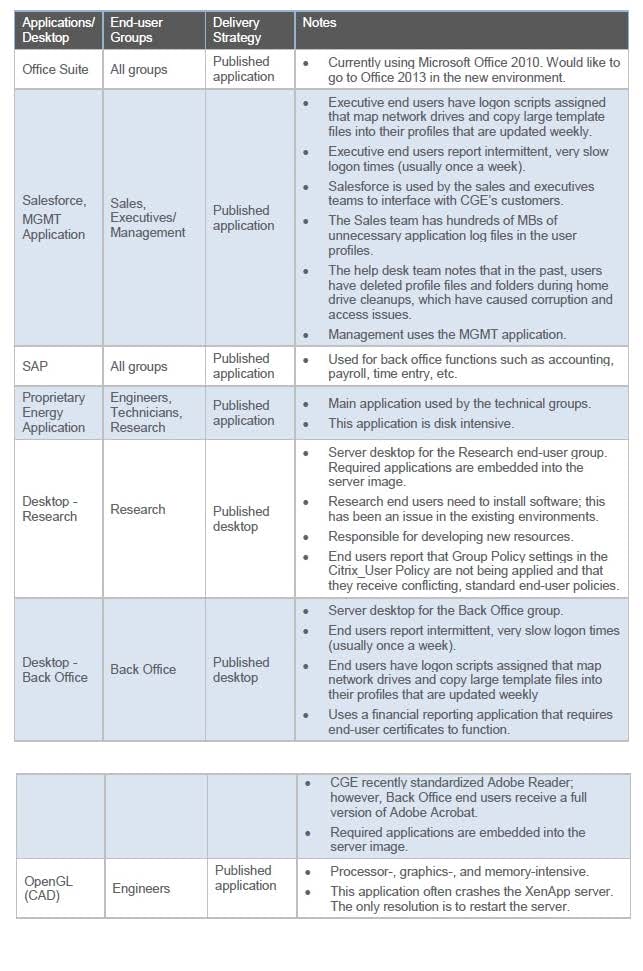
The following table outlines current application specifics. All servers are Windows 2008 R2 running XenApp 6.5, and all are virtual machines. Applications are delivered based on grouping. For example, Office Suite is installed on a dedicated set of servers.

Active Directory
As the solution integrates with Active Directory, resources must be easy to manage and maintain within the directory structure. The following details CGE's typical organizational unit (OU) structure for the XenApp environments.
Overview Databases Overview
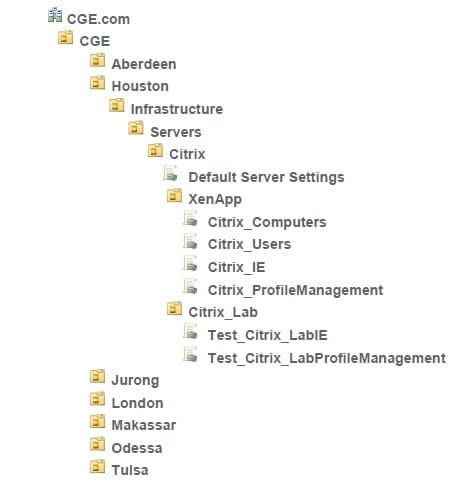
CGE manages seven XenApp 6.5 farms—one for each region. A variety of SQL server versions host the farm databases. Some databases are located on a shared SQL cluster, while others are standalone. The following table provides an overview of each environment, the database location, and the database configuration.

Licensing Overview
As each region currently manages its own Citrix infrastructure, licensing types vary from region to region.
Some regions have more licenses than end users, while others sometimes reach their limit. Each region
has its own Citrix and Microsoft license servers.
Corporate IT will be consolidating the Citrix and Microsoft licenses under a common corporate agreement
in the new Citrix environment. This will allow for better cost control and appropriate distribution of licenses.
If needed, additional licenses will be procured to support the new Citrix solution. This may involve
purchasing additional Microsoft and Citrix licenses to support a disaster recovery model.
The following details the current Citrix and Microsoft license types.

All regions use virtualized XenApp 6.5 servers. Some regions currently use Provisioning Services 6.1, but CGE wants to simplify management processes by moving to Provisioning Services 7.6 in each region. Although there are no test farms in the current Citrix environments, CGE would like to incorporate dedicated test environments in the new Citrix solution. These new test environments should utilize a minimum of storage. The following table details the XenApp environments for each region.

End users in some regions often complain about slow application enumeration and launch issues. Corporate IT hopes that these issues will be resolved with the new Citrix solution.
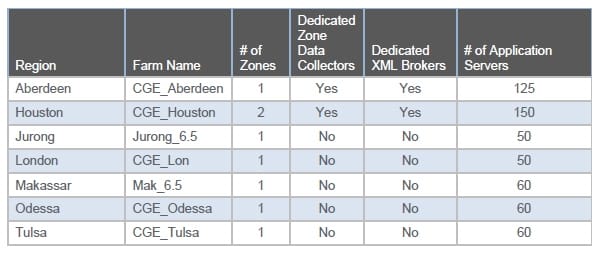
Depending on the region, the physical hosts that provide hardware virtualization use a variety of local and SAN-based storage. Using local storage has prevented virtual machines from moving to another host in the event of a host failure, creating some regional capacity issues. Corporate IT is unsure if end-user data is being backed up in all regions. CGE hopes to implement global formal standards in the new Citrix environment. A fault-tolerant solution is required for hardware virtualization and end-user data storage. The following table describes the different storage types based on region: CGE utilizes regional private networks. Not all regions connect directly to each other. The network links range in size from 5 Mbps to 10 Mbps. The networks are congested at times among regions, causing large file copies to be scheduled during off hours to minimize disruption. CGE currently has a project underway to increase the bandwidth among regions and reduce latency for the new Citrix environment. The following diagram details the links among the regions.
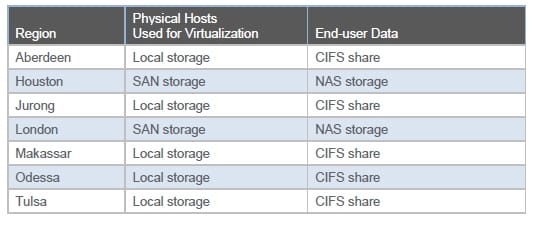
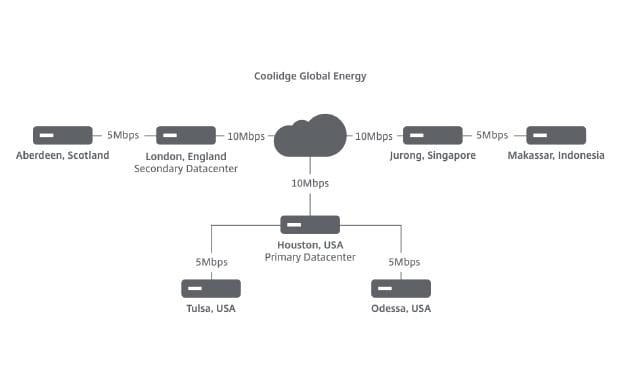
Each region has a separate Internet connection of varying capacity and utilizes its own local network connection for Internet traffic. Microsoft and routing policies are in place to direct Internet-bound traffic to use this local Internet connection. The goal was to reduce the amount traffic on the links among regions, saving bandwidth for interregional traffic. For external Citrix access, each region uses its local Internet connection. The NetScaler Gateways and Citrix Secure Gateways are placed in a demilitarized zone (DMZ). Appropriate firewall ports are configured to allow the Citrix traffic to navigate to the internal resources.
As CGE acquired several companies within a short period of time, it did not change any of the acquired companies’ infrastructures. This has resulted in regional inconsistency in hypervisor platforms and versions and with hardware vendors. Corporate IT hopes to streamline the infrastructure to ensure corporate standards are followed. At a minimum, a standard hypervisor platform must be used to allow IT resources to train on a common hypervisor platform and to quickly assist in other regions when needed.
For the new Citrix solution, CGE has budgeted for the replacement of aging infrastructure equipment, where needed, including the hypervisor platform. Procurement of the best infrastructure components within this planned budget must be ensured.













